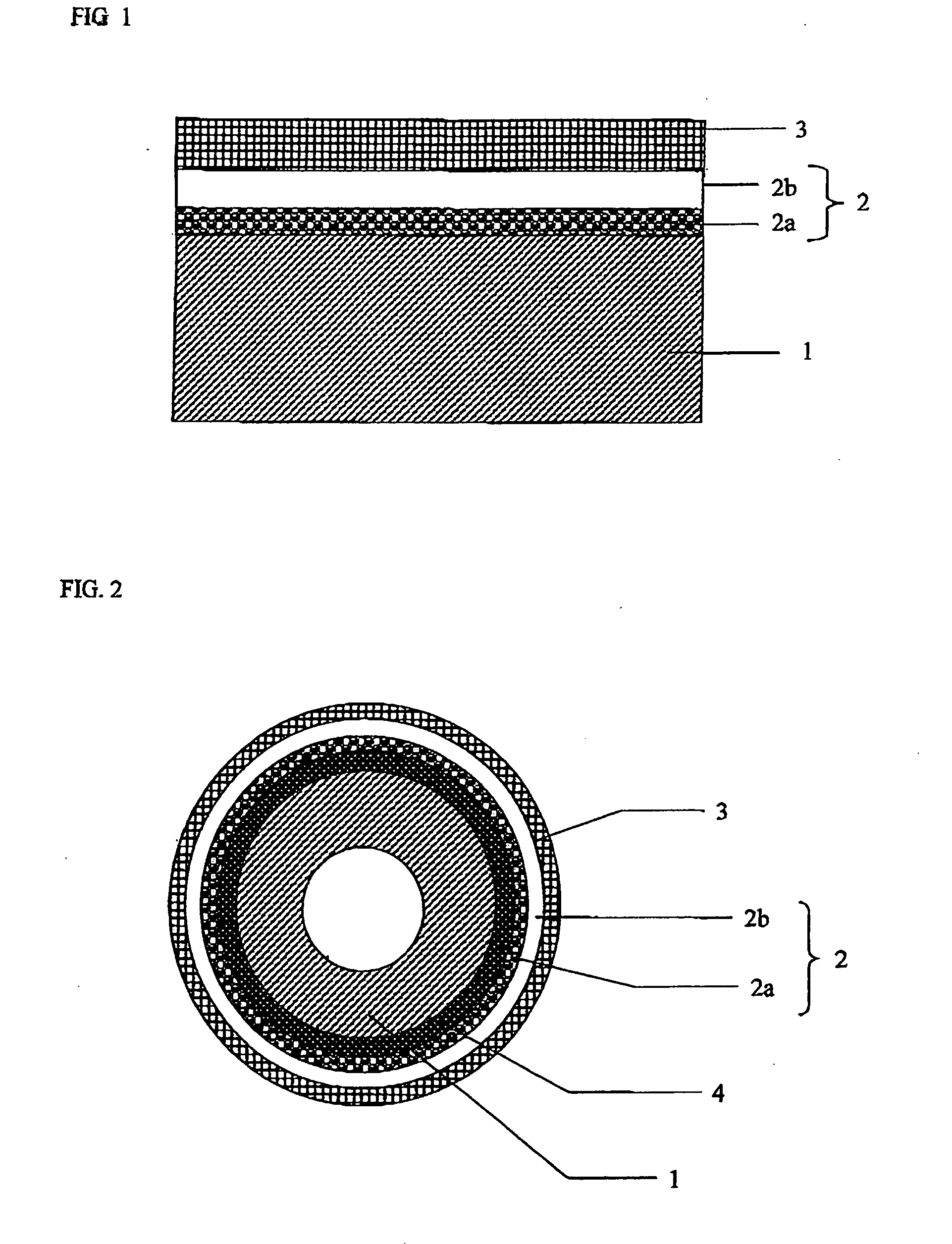Solid oxide fuel cell
a fuel cell and solid oxide technology, applied in the manufacture of cell components, final product products, natural mineral layered products, etc., can solve the problems of increasing the resistance loss of the solid electrolyte layer, reducing the electric power generation capacity, and difficult densification of the reaction control layer, etc., to achieve excellent strength, high ionic conductivity and electronic conductivity, and high stability
- Summary
- Abstract
- Description
- Claims
- Application Information
AI Technical Summary
Benefits of technology
Problems solved by technology
Method used
Image
Examples
example
(Study of Sintering Assistant by Bulk Body and Evaluation of Electric Conductivity)
[0062]With respect to the sintering assistant to be added to the cerium-containing oxide in the first layer of the solid electrolyte layer, a pressed body was prepared to carry out study. As the cerium-containing oxide, LDC40 powder was used. As the sintering assistant containing Ga element, Ga2O3 powder was used and as the sintering assistant containing B element, H3BO3 powder or BN powder was used and each of powders was mixed into the LDC40 powder to prepare a mixed powder such as to fall under the condition of Table 2 on an oxide conversion basis. Herein, the mixing was carried out by a ball mill. After having added a binder to the obtained mixed powder, uniaxial press forming was carried out so as to prepare the pressed body. The pressed body was sintered at a predetermined temperature indicated in Table 2. Relative density of the obtained sintering body was measured by an Archimedes method. Afte...
PUM
| Property | Measurement | Unit |
|---|---|---|
| operating temperature | aaaaa | aaaaa |
| porosity | aaaaa | aaaaa |
| thickness | aaaaa | aaaaa |
Abstract
Description
Claims
Application Information
 Login to View More
Login to View More - R&D
- Intellectual Property
- Life Sciences
- Materials
- Tech Scout
- Unparalleled Data Quality
- Higher Quality Content
- 60% Fewer Hallucinations
Browse by: Latest US Patents, China's latest patents, Technical Efficacy Thesaurus, Application Domain, Technology Topic, Popular Technical Reports.
© 2025 PatSnap. All rights reserved.Legal|Privacy policy|Modern Slavery Act Transparency Statement|Sitemap|About US| Contact US: help@patsnap.com


